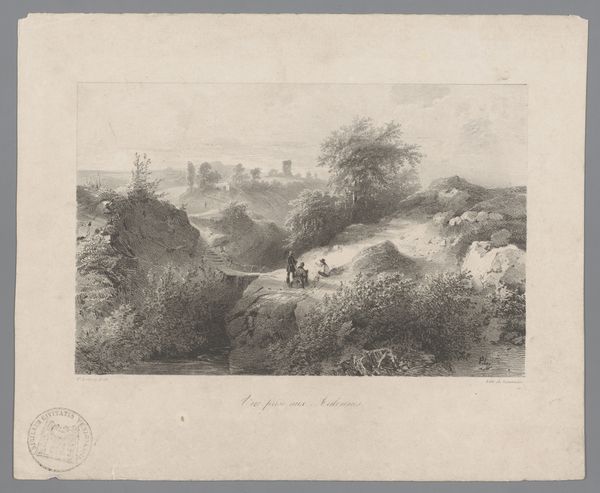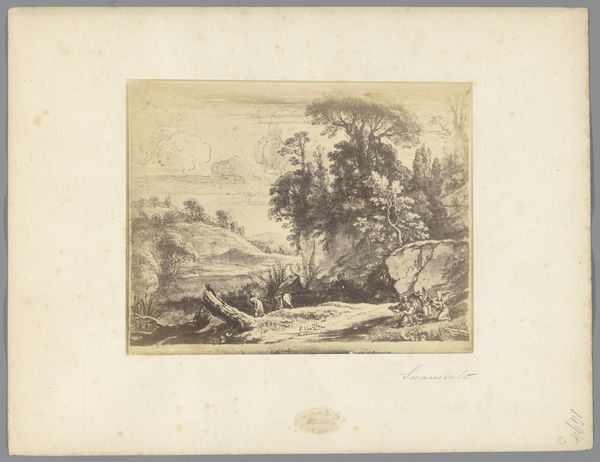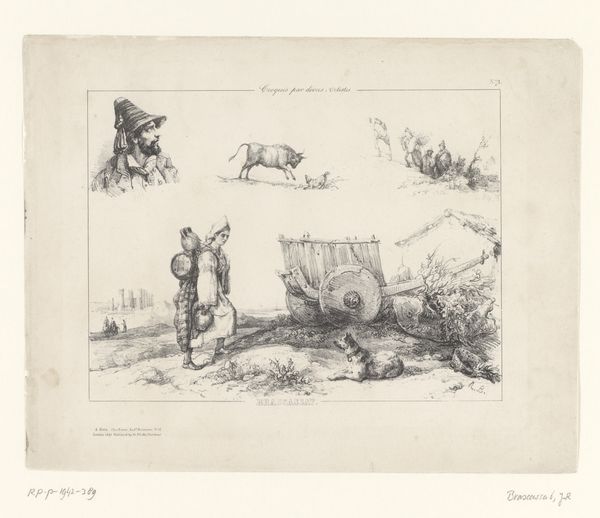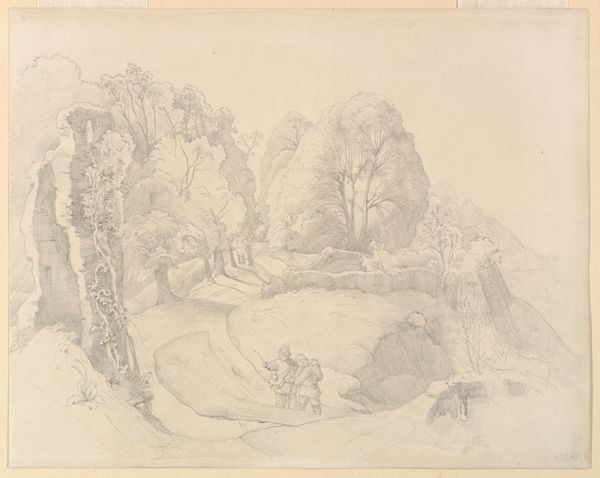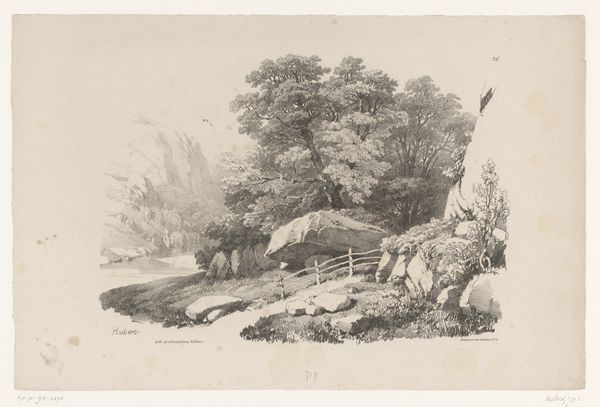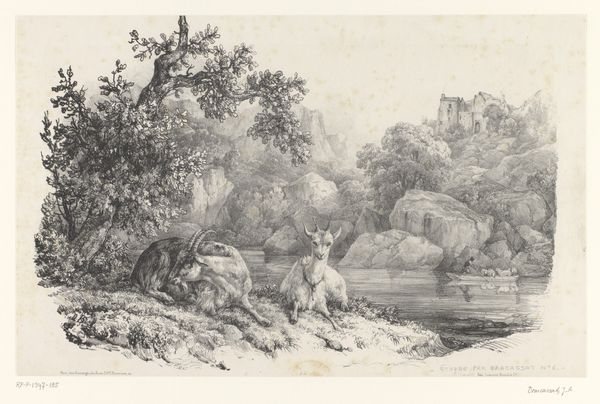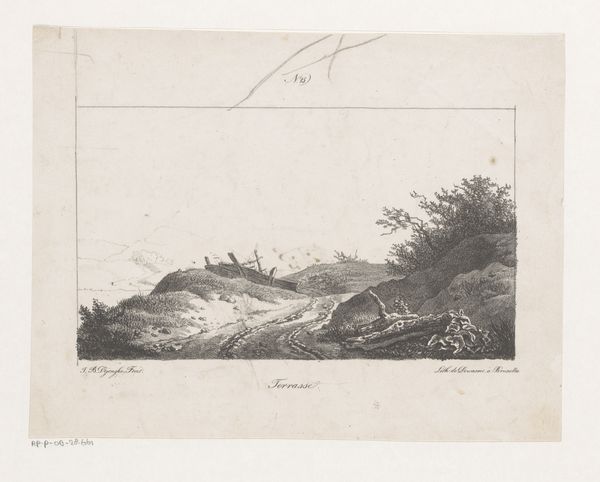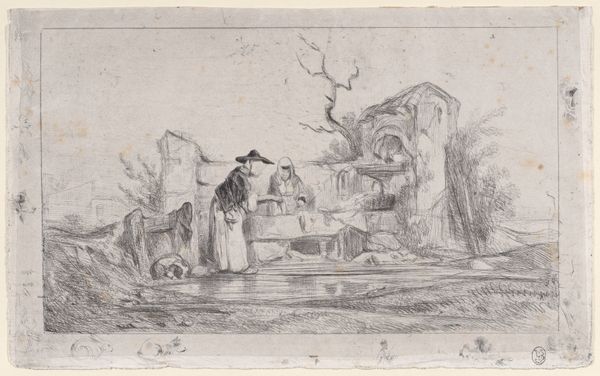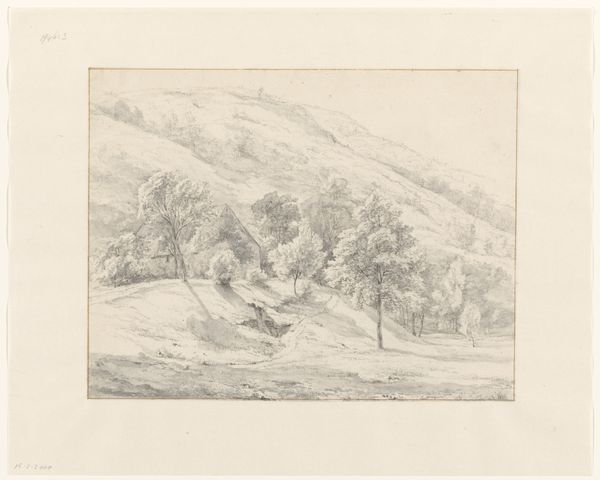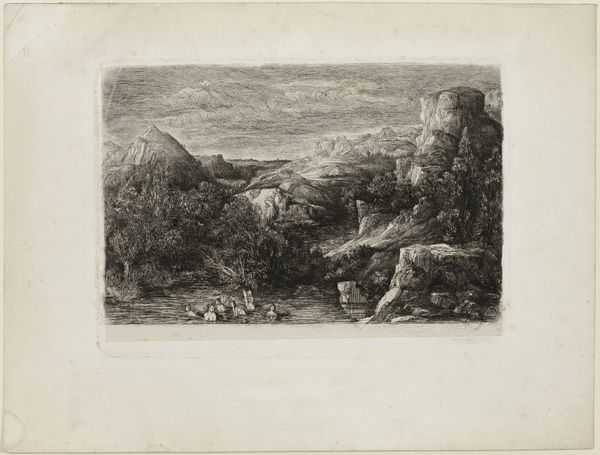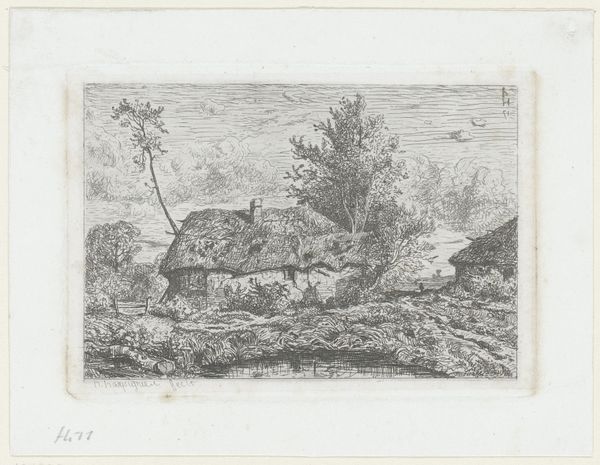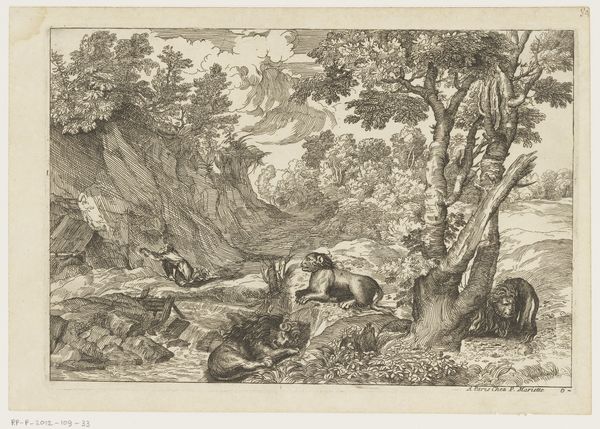![Bridge over Rocky Stream [top verso] by John William Casilear](/_next/image?url=https%3A%2F%2Fd2w8kbdekdi1gv.cloudfront.net%2FeyJidWNrZXQiOiAiYXJ0ZXJhLWltYWdlcy1idWNrZXQiLCAia2V5IjogImFydHdvcmtzLzcwNjk5MWMyLWFmOWUtNGZhMi1iMDc5LTQ0ZDA0OTU1OTQ3ZC83MDY5OTFjMi1hZjllLTRmYTItYjA3OS00NGQwNDk1NTk0N2RfZnVsbC5qcGciLCAiZWRpdHMiOiB7InJlc2l6ZSI6IHsid2lkdGgiOiAxOTIwLCAiaGVpZ2h0IjogMTkyMCwgImZpdCI6ICJpbnNpZGUifX19&w=3840&q=75)
drawing, pencil
#
drawing
#
landscape
#
pencil
Dimensions: sheet: 27.9 × 35.5 cm (11 × 14 in.)
Copyright: National Gallery of Art: CC0 1.0
Curator: Welcome. Before us we have a drawing entitled "Bridge over Rocky Stream" by John William Casilear. It is rendered in pencil. Editor: There's a delightful sense of immediacy to this drawing, almost like peering into Casilear's personal sketchbook. The strokes are quick, efficient, and really capture the rugged texture of the rocks. Curator: Casilear was working within a tradition where the sketches and drawings were part of his artistic process. He would go out into nature, do several drawings, and then go back to his studio, maybe, to produce his painting. The question then is what purpose drawings had at this moment, whether they were considered artworks in their own right. Editor: That's an excellent point. We're left to consider this drawing in light of its materiality. He uses pencils that produce distinct variations of shade depending on how they’re applied on the page. It's more than just capturing visual data. He seems invested in the very act and physical movement involved in depicting each subject. The materiality adds an emotive depth. Curator: It’s interesting how Casilear frames the image within the page. He shows us a rural scene that probably was very popular with middle-class society in the 19th century. But that's only one component; the viewer should bear in mind what purpose that stream has for an industrializing society: waterpower, a site for recreation, even tourism. These sites and landscape traditions served an ideological purpose for westward expansion and economic gain, and the bridge becomes symbolic of these. Editor: So, the bridge takes on another function beyond the utilitarian. It's a means to conquer the wild landscape. Did Casilear take part of that intention, or did he challenge it by leaving the construction so subtle and unadorned? Curator: That subtlety you note may be telling; Casilear's inclusion is an almost incidental note within the grandeur of nature itself. But you bring out an important idea about how his work enters society at the time, to whom is the work addressed? It shows that this kind of material carries much cultural baggage as soon as it appears in society. Editor: I’m just thinking how radical it is to simply present the rough qualities inherent in those marks he made. It is such an honest look. Thank you for highlighting its cultural impact. Curator: And thank you for helping bring its tactile qualities to light.
Comments
No comments
Be the first to comment and join the conversation on the ultimate creative platform.
